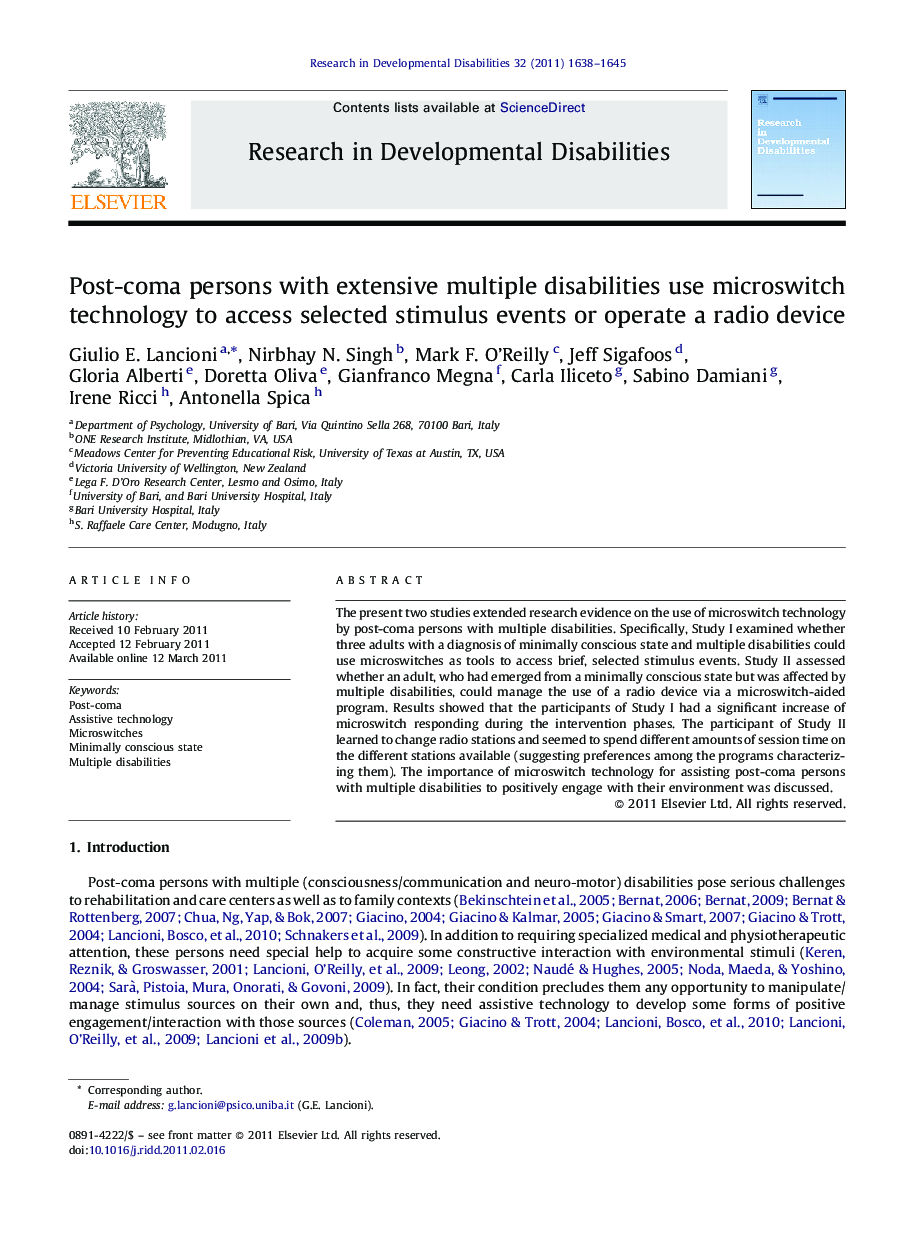| Article ID | Journal | Published Year | Pages | File Type |
|---|---|---|---|---|
| 371694 | Research in Developmental Disabilities | 2011 | 8 Pages |
The present two studies extended research evidence on the use of microswitch technology by post-coma persons with multiple disabilities. Specifically, Study I examined whether three adults with a diagnosis of minimally conscious state and multiple disabilities could use microswitches as tools to access brief, selected stimulus events. Study II assessed whether an adult, who had emerged from a minimally conscious state but was affected by multiple disabilities, could manage the use of a radio device via a microswitch-aided program. Results showed that the participants of Study I had a significant increase of microswitch responding during the intervention phases. The participant of Study II learned to change radio stations and seemed to spend different amounts of session time on the different stations available (suggesting preferences among the programs characterizing them). The importance of microswitch technology for assisting post-coma persons with multiple disabilities to positively engage with their environment was discussed.
Research highlights► Microswitch technology allowed persons with minimal consciousness to access stimuli. ► A microswitch-aided program allowed a post-coma person to manage the use of a radio. ► Minimal finger movements, eyelid closures, and hand movements were used as responses.
